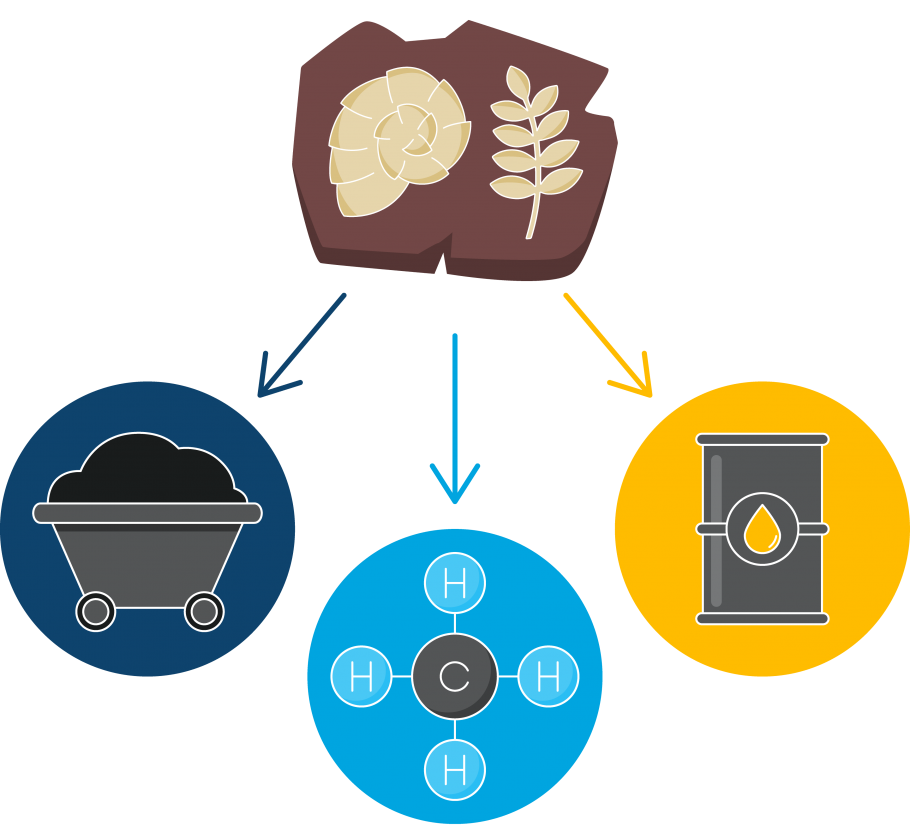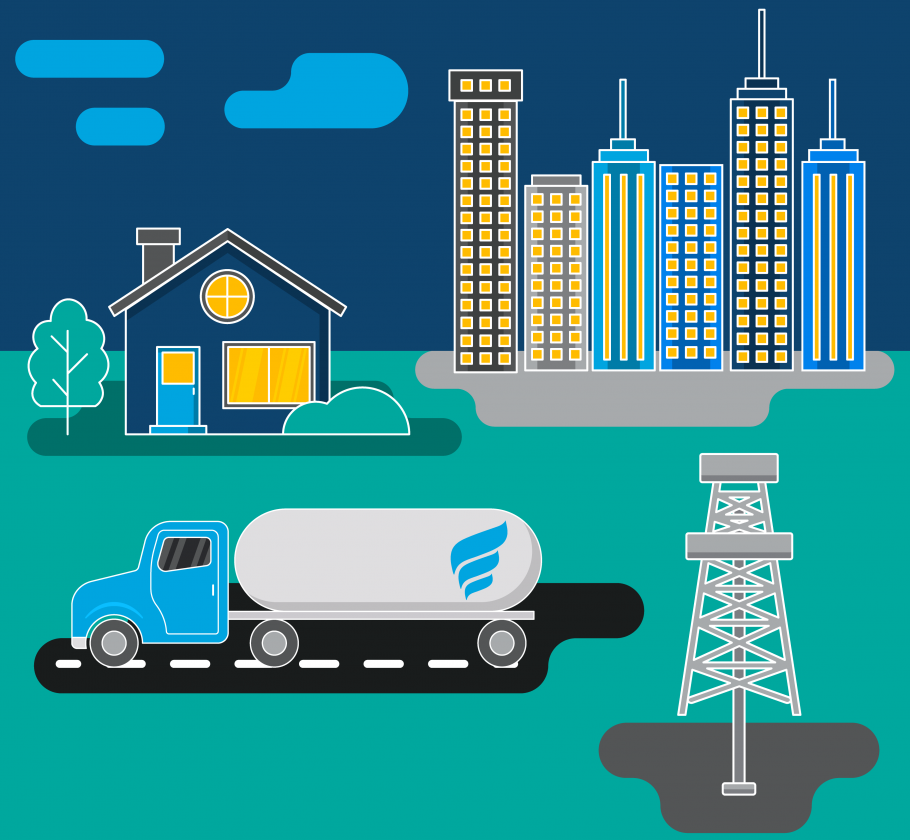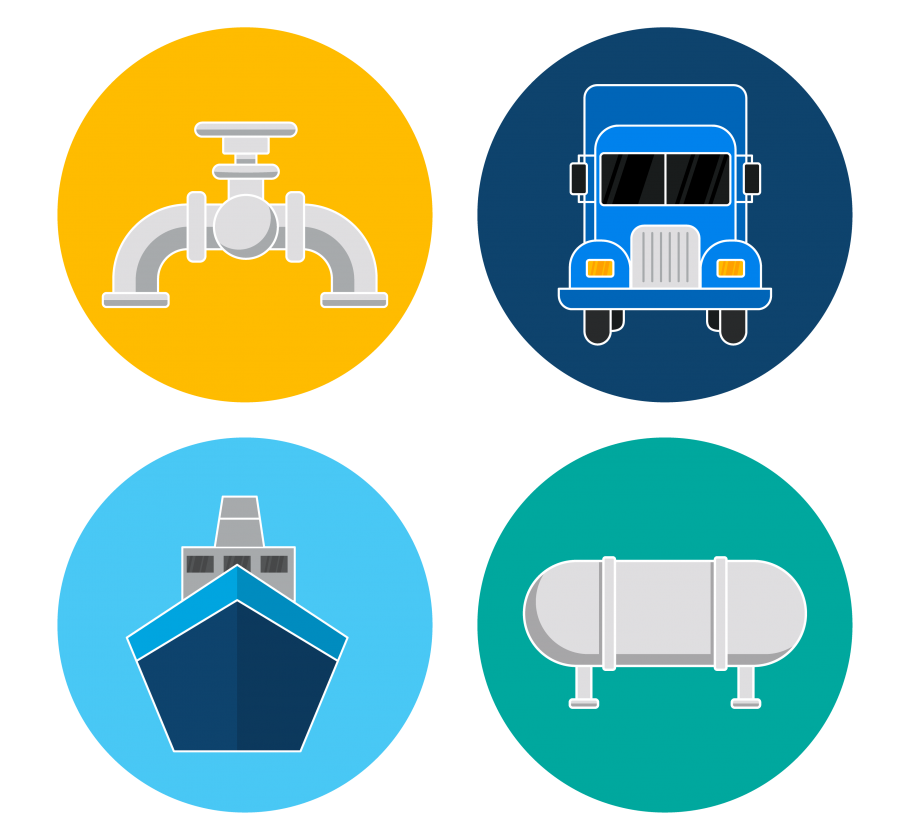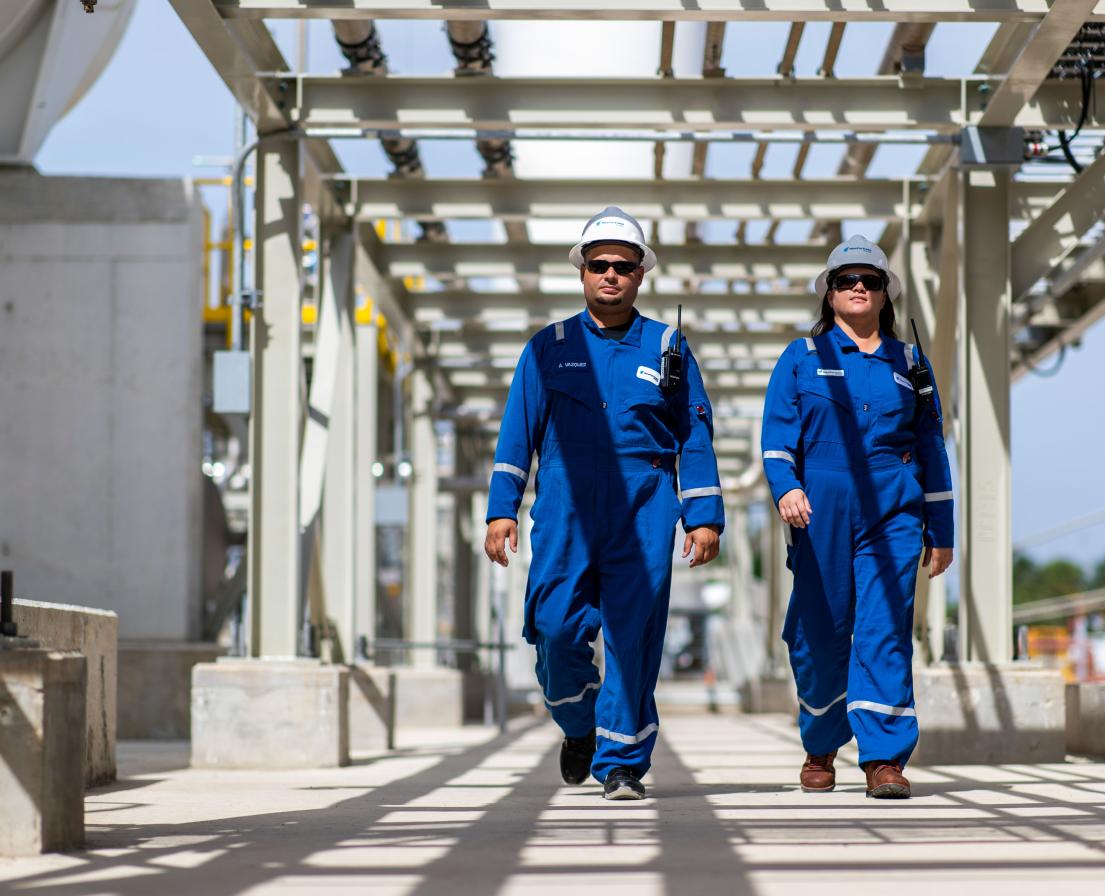Natural gas infrastructure explained
LNG CASE STUDY
Natural gas infrastructure explained
People worldwide rely on natural gas for electricity, heat, light, transportation fuel, chemical production, and more.1 But how does that gas, which begins as decomposing plant and animal matter buried deep within sedimentary rock or along the ocean floor,2 get to our homes, businesses, public facilities, and more?
For that remarkable process, we can all thank the complex system natural gas infrastructure of pipelines, liquefaction, storage, shipping and trucking, and regasification that New Fortress Energy is proud to play a vital role in creating and maintaining.

What is natural gas?
At its most basic, natural gas is simply carbon and hydrogen – methane (CH4), to be specific.3 In its raw form, it may contain additional components such as butane, propane, pentane, nitrogen, carbon dioxide, and water vapor.4 It’s colorless, odorless, and tasteless.5
Natural gas begins as animals and plants that have died and decomposed.6 Through heat and pressure over millions of years, those fossils transform into fossil fuels: coal, oil, and natural gas.7 Some rises to the surface of the earth or the ocean floor.8 The rest becomes trapped in the crevices among the rocks and sediment miles below the surface of the Earth, and must be accessed by drilling or going through oil wells and coal deposits.9
Here at New Fortress Energy, we deliver liquefied natural gas, or LNG. LNG simply means the natural gas has been cooled and condensed into a liquid that occupies 1/600 of its gaseous volume.10
Natural gas brings many benefits: it’s abundant, safe, cost-effective, reliable, efficient, easily transported, and, perhaps most important, environmentally friendly.11 In fact, it’s the world’s cleanest-burning hydrocarbon, generating as much as 55% fewer carbon dioxide emissions than coal.12 Natural-gas-fueled power plants emit less than 10% of the pollutants that coal-fired plants do.13 And since LNG is not stored in underground tanks like oil is, it’s unlikely to contaminate soil or water sources.14

What is natural gas infrastructure?
Natural gas infrastructure includes everything that brings this fuel from its source to the end users: pipelines, transportation and storage facilities, and processing operations.15

What are the types of natural gas infrastructure?
Let’s take a walk along the journey through natural gas infrastructure.
- It starts with the pipelines, which gather gas from the wells where it has been extracted from under the Earth’s surface, then send it to a processing plant or a larger pipeline for transportation elsewhere.16 Here’s a fun fact – together, all the world’s natural gas pipelines could go to the moon and back at least eight times!17
- Most often, the raw natural gas then moves to processing facilities to remove contaminants18 and be treated and purified into just methane.19
- Here at New Fortress Energy, the next step is liquefaction, changing the gas into a liquid so we can more easily and safely move it wherever it’s needed around the world. Our liquefier plant in Miami, Florida, can process 100,000 gallons of natural gas every day for delivery to commercial, industrial, and transportation customers throughout South Florida and the Caribbean.
- Then, it’s time for storage – the natural gas has earned a rest! LNG storage can be in a variety of places, such as underground aquifers, salt caverns, and even former oil and gas fields.20 We store LNG in our own facilities, such as our landed storage in Montego Bay, Jamaica, and our offshore storage in Old Harbour, Jamaica.
- The final step is transportation to customers. This is where LNG’s advantages shine, because LNG has the luxury of moving wherever it needs to go. By sea, it moves in massive, double-hulled carrier ships.21 In Puerto Rico and Mexico, trucks bring LNG to our small-scale customers. Either way, it is kept in tanks cooled to -160°C so it stays in its liquid form.22
- In order for the LNG to be used as fuel, it undergoes regasification which involves warming it until it reverts to its gaseous state.23 This can happen at a customer’s facility, or at a LNG terminal; in the latter case, the gaseous natural gas then travels by large intrastate or interstate pipelines to customers.24

Why is natural gas infrastructure important?
The simple answer is that the remains of decomposed fossils are a vital source of fuel worldwide, but they can’t move themselves! Powering the world with the positive energy of natural gas requires an effective system of acquisition, processing, storage, and transportation.

What are the benefits of natural gas infrastructure?
With its clear advantages, natural gas is in demand around the globe. Natural gas infrastructure, including LNG infrastructure, is a well-established, simple, and safe approach to meet that growing need. Moreover, it supports energy security, economic growth, and a healthier planet.25
